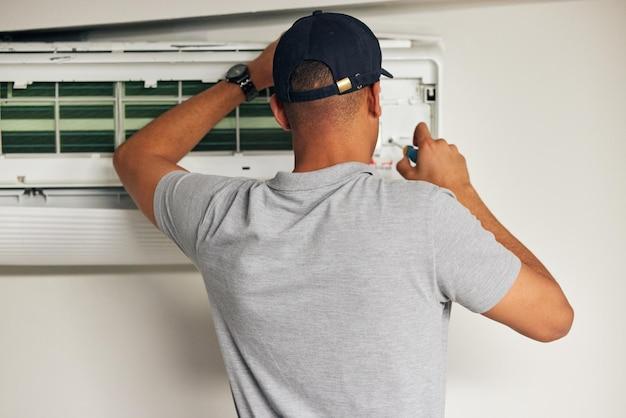The world of gaming is constantly evolving, with developers pushing the boundaries of visuals and performance. In this quest for the ultimate gaming experience, you may have come across the term “shader cache.” But what exactly is shader cache and how does it impact your gaming performance? Don’t worry, we’ve got you covered.
In this blog post, we’ll delve into the intricacies of shader cache and its role in enhancing your gaming experience. We’ll answer common questions like how to clear your shader cache, whether you should turn it on or off, and how it affects popular games like GTA 5. So grab your favorite gaming controller and let’s dive into the world of shader cache optimization to level up your gaming performance in 2023!
What Is Shader Cache
The Magic Behind Efficient Graphics Rendering
If you’re a gamer or a computer enthusiast, you’ve probably heard the term “shader cache” being thrown around. But what exactly is shader cache, and what role does it play in our gaming experience? Buckle up! We’re about to dive into the fascinating world behind the scenes of graphics rendering.
How Shaders Make Graphics Look So Good
When you fire up your favorite game, have you ever wondered how the lighting, shadows, and textures come together to create such immersive visuals? One of the key players in this equation is the shader. Think of a shader as an artist’s palette – it’s a small program that determines how each individual pixel on your screen should look and behave.
The Battle of Time vs. Visual Fidelity
Now, imagine every shader in a game needing to be compiled on-the-fly each time you launch it. Not very efficient, right? That’s where shader cache comes in to save the day. The shader cache acts like a storage locker for precompiled shaders, eliminating the need for time-consuming compilation during gameplay. In other words, it helps strike a balance between jaw-dropping graphics and smooth performance.
Behind the Scenes of Shader Compilation
When you first launch a game, your graphics card diligently goes to work compiling the shaders required to create the stunning visuals you love. It takes a bit of time but fear not, because the shader cache comes to the rescue. Once these shaders are compiled, they are stored in the cache for future use. The next time you play the game, instead of compiling shaders from scratch, your graphics card can access the precompiled versions, saving precious milliseconds.
Faster Load Times and Smoother Gameplay
Thanks to the shader cache’s ability to store precompiled shaders, your gaming experience becomes smoother and more seamless. It reduces the load times significantly, as your graphics card doesn’t have to spend valuable seconds compiling shaders before you can dive into your virtual adventures. So, while the cache quietly does its work in the background, you get to enjoy faster load times and an overall better gaming experience.
The Perks of Persistent Caching
Shader cache doesn’t limit its advantages to a single gaming session. It’s designed to persistently store compiled shaders on your system. This means that over time, as you play a particular game, the shader cache expands and becomes more efficient. As a result, subsequent gaming sessions become even faster, as more shaders are already compiled and ready to go. It’s like having a personal graphics genie that grants your wish for faster load times.
To Cache or Not to Cache
Shader cache is undoubtedly a valuable tool for gamers, but is it always beneficial? While the default setting for shader cache is usually best, some users might have unique hardware or software configurations that could benefit from fine-tuning this setting. So, if you’re facing any graphical glitches or performance issues in a particular game, it might be worth exploring the options menu and experimenting with the shader cache settings.
Embrace the Magic of Shader Cache
So, the next time you fire up your favorite game and marvel at the stunning graphics, take a moment to appreciate the hard work happening behind the scenes. The shader cache quietly optimizes your gaming experience, allowing you to have your cake and eat it too – stunning visuals without sacrificing performance. It’s like having a magical assistant that ensures your gaming adventures are as smooth as butter. Embrace the wizardry of shader cache and let the games begin!
FAQ: What Is Shader Cache
Welcome to our comprehensive FAQ section on shader cache! We’ve gathered the most commonly asked questions about shader cache and compiled them here, just for you. So, strap in and get ready to have all your burning questions about shader cache answered.
How do I clear my shader cache
To clear your shader cache, you can follow these simple steps:
- First, open the Nvidia Control Panel.
- Then, navigate to the “3D Settings” section.
- Under “Global Settings,” click on “Shader Cache.”
- Finally, select “Off” to disable the shader cache or click on “Delete Shader Cache” to clear it.
How do I disable Nvidia cache
Disabling the Nvidia cache is a breeze. Here’s what you need to do:
- Open the Nvidia Control Panel.
- Head over to the “3D Settings” section.
- Look for the “Shader Cache” option under “Global Settings.”
- Simply choose “Off” to disable the Nvidia cache.
Does Mfaa improve performance
Indeed, it does! Mfaa, or Multi-Frame Sampled Anti-Aliasing, is a nifty feature developed by Nvidia. It enhances image quality while minimizing the performance impact. Your games will look smoother and more stunning without sacrificing precious FPS.
What is threaded optimization
Threaded optimization is like a well-choreographed dance for your GPU. It helps distribute the workload among multiple CPU threads, allowing your graphics card to perform more efficiently. This dynamic duo ensures your games run like a finely tuned machine.
Should PhysX be on CPU or GPU
PhysX, the physics engine developed by Nvidia, can be processed by either your CPU or GPU. But for the best experience, it’s recommended to offload the physics calculations to your GPU. It frees up your CPU to focus on other tasks and can result in smoother gameplay.
Does GTA 5 support Mfaa
Absolutely! Grand Theft Auto V can take full advantage of Mfaa. Enabling Mfaa in the Nvidia Control Panel will provide you with crisp and polished visuals while roaming the vibrant streets of Los Santos.
Does Radeon anti-lag reduce FPS
No need to worry, Radeon anti-lag won’t put a dent in your FPS. In fact, it’s designed to improve your gaming experience by reducing input lag. Say goodbye to those frustrating moments when your actions feel slightly delayed. With Radeon anti-lag, your commands will be executed lightning-fast.
What does AMD optimized mean
When you see “AMD optimized,” it means that a particular software or game has been fine-tuned to extract the utmost performance from AMD graphics cards. So, if you’re rocking an AMD GPU, rejoice! You can expect top-notch performance and silky-smooth gameplay.
Does shader cache increase performance
Shader cache is like your gaming genie, granting you better performance wishes. It stores compiled shaders so that your GPU doesn’t have to work as hard to load and process them each time. This results in snappier load times and improved overall performance.
How do I turn off AMD shader cache
To turn off the AMD shader cache, follow these steps:
- Launch the AMD Radeon Settings.
- Go to the “Gaming” tab.
- Under “Global Settings,” click on “Shader Cache.”
- Finally, toggle the switch to disable the shader cache.
Does PhysX slow down performance
Fear not, for PhysX won’t bring your performance to a screeching halt. When properly implemented and used sparingly, PhysX can enhance the visual fidelity of games without causing a significant performance drop. It’s all about finding the right balance between eye candy and frame rates.
Is Mfaa better than MSAA
Mfaa and MSAA are both anti-aliasing techniques, but Mfaa holds a slight advantage. With its clever sampling algorithm, Mfaa offers comparable image quality to MSAA with a lesser impact on performance. So, if you’re looking for a win-win situation, Mfaa is the way to go.
Should I turn shader cache on or off
While personal preferences can vary, it’s generally recommended to keep the shader cache turned on. With shader cache enabled, you’ll enjoy faster load times and smoother gameplay. The GPU doesn’t need to compile shaders from scratch each time, ensuring a more seamless gaming experience.
Is it safe to delete DirectX shader cache
Absolutely! Clearing the DirectX shader cache won’t cause any harm. Doing so simply clears out temporary files and frees up disk space. It’s like tidying up your gaming den without any adverse effects on your system or games.
Where is AMD shader cache located
The AMD shader cache can be found in the following location:
C:\Users\YourUsername\AppData\Local\AMD\DxShaderCache
Don’t forget to replace “YourUsername” with your actual username.
What happens if you clear shader cache
When you clear the shader cache, your GPU will need to recompile shaders the next time a game or application requires them. This may result in slightly longer loading times until the shaders are re-cached. So, consider clearing the shader cache only if you encounter performance issues or graphical glitches.
Does shader cache cause stuttering
Quite the contrary! Shader cache is like your trusty sidekick in the fight against stuttering. By storing compiled shaders, it ensures a smoother gaming experience by reducing stutter caused by shader compilation during gameplay. So, keep that shader cache engaged for buttery-smooth gaming moments.
What does DSR smoothness do
DSR smoothness is all about fine-tuning your gaming experience. It controls the sharpness of images when using Nvidia’s Dynamic Super Resolution (DSR) feature, which lets you render games at a higher resolution and downscale them for better visual clarity. Adjust the smoothness to find your sweet spot between crispness and performance.
What is Radeon
Radeon is AMD’s brand and line of graphics cards. They offer a range of GPUs, catering to different budget and performance needs. Whether you’re a casual gamer or an enthusiast chasing pixel perfection, Radeon has you covered with their cutting-edge graphics technology.
Do games still use PhysX
Absolutely! Although not as prevalent as it once was, PhysX is still utilized in many games today. It’s known for its impressive physics simulation, allowing for realistic effects like dynamic debris, smoke, and fluid interactions. So, get ready to witness some mind-blowing in-game physics!
Does AMD have shader cache
Indeed, AMD graphics cards also have a shader cache. Similar to Nvidia’s shader cache, it stores compiled shaders for faster loading times and improved performance. So, whether you’re team green or red, shader cache is here to make your gaming experience even better.
Does PhysX increase FPS
PhysX can have a slight impact on FPS, especially when handling complex physics calculations in-game. However, the extent of the performance hit depends on various factors, including the implementation and scale of PhysX effects. Rest assured, though, the eye-catching visual enhancements are often worth the modest FPS cost.
And there you have it! We’ve tackled all the burning questions you may have had about shader cache. Now, armed with this knowledge, you can optimize your gaming setup like a pro. So go forth, game on, and may your shader cache be forever snappy and glitch-free!
Please note that the information provided here is accurate as of 2023.

